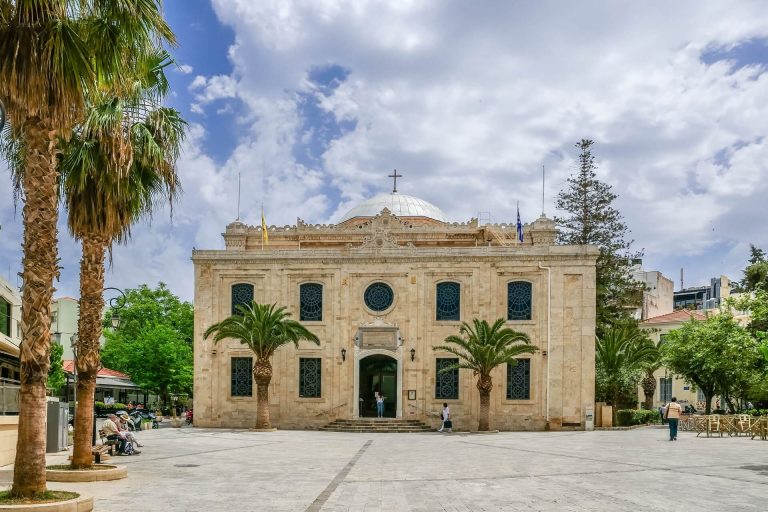Nestled on the bustling 25th August Street, amidst the vibrant café culture of Heraklion Town, stands the majestic Agios Titos Cathedral, a beacon of spiritual history and architectural beauty. Our visit to this iconic landmark was both an enlightening and awe-inspiring experience, offering a deep dive into the layered religious history of Crete.
A Byzantine Legacy Reborn
Our journey through the cathedral’s history began with its foundation, believed to be laid in 961 A.D. by Byzantine Emperor Nicephorus Phokas. Following Crete’s liberation from Arab rule, the emperor erected this Orthodox church to reintroduce and reinforce Christianity on the island. The cathedral was dedicated to Agios Titos, Apostle Paul’s disciple and Crete’s first bishop, marking a new era of Christian faith in Crete.
From Ancient Gortyn to Heraklion
The original site of worship dedicated to Agios Titos was in ancient Gortyn, the island’s erstwhile capital, which was relocated to Heraklion after being ravaged by an earthquake. The relocation of Agios Titos’ skull, alongside other sacred relics to this new site, symbolized the continuity of Christian worship and its resilience in the face of adversity.
A Mosque Amidst Ruins
The cathedral’s transformation during the Turkish occupation into the Vezir Mosque is a poignant reminder of Crete’s tumultuous history. The 1856 earthquake that left the mosque in ruins led to its reconstruction by architect Athanasios Mousis, blending its Orthodox origins with Ottoman architectural elements. This period of its history adds a layer of multicultural depth to the cathedral’s identity.
Restoration and Renaissance
Our exploration concluded with the cathedral’s modern era, beginning with the dismantling of the minaret post the Ottoman exodus and Crete’s unification with Greece. The 1925 renovation restored the cathedral’s Orthodox Christian identity, turning it into a spiritual haven for locals and visitors alike.
Reflections and Revelations
The Agios Titos Cathedral, with its serene surroundings and rich historical tapestry, offered us a profound insight into the spiritual heart of Crete. It stands as a testament to the island’s ability to assimilate diverse cultural influences while preserving its spiritual heritage. Our visit was not just a step back in time but a reflection on the enduring power of faith and identity in shaping the character of a place.
Sorry, no records were found. Please adjust your search criteria and try again.
Sorry, unable to load the Maps API.
